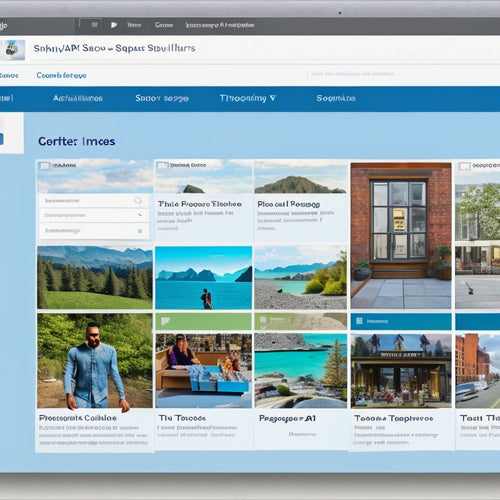
Efficient Returns: How to Wow Customers
Share
Efficient returns processing is an essential aspect of e-commerce that, when done correctly, can be a key differentiator in driving customer satisfaction, loyalty, and ultimately, business growth. By streamlining returns, businesses can reduce labor costs, enhance customer satisfaction, and increase loyalty. A well-crafted return policy that communicates clearly with customers can build trust and confidence. Leveraging data and automation can help identify trends and areas for improvement, turning returns into growth opportunities. By prioritizing communication, understanding customer needs, and creating a seamless customer-centric experience, businesses can turn returns into a competitive advantage, and uncover new ways to wow their customers.
Key Takeaways
• Implement a clear and concise return policy that sets customer expectations and builds trust.
• Leverage data and automation to streamline the return process, reducing manual labor and increasing efficiency.
• Communicate proactively with customers to understand their needs and reduce return rates through improved product information.
• Use returns as an opportunity to enhance customer satisfaction, turning potential negative experiences into positive ones.
• Analyze return data to identify trends and areas for improvement, turning returns into growth opportunities.
Understanding Returns in E-commerce
In the world of e-commerce, returns are an inevitable and integral part of the customer buying journey, with customers initiating returns for online purchases that fail to meet their expectations.
It's essential for businesses to understand that returns are not a failure, but an opportunity to improve communication and build trust with customers. By acknowledging the importance of returns, brands can proactively reduce returns rates by improving product descriptions, providing excellent customer service, and setting clear return policies.
This not only enhances customer satisfaction but also saves time and resources for merchants. By prioritizing communication and understanding customer needs, businesses can reduce returns and create a seamless shopping experience that drives loyalty and growth.
Streamlining for Efficiency
By streamlining the return process, e-commerce businesses can substantially reduce the workload associated with handling returns, freeing up valuable resources to focus on driving sales and enhancing customer relationships.
| Benefits of Streamlining | Results |
| Automation benefits | Faster processing and reduced labor costs |
| Improved customer satisfaction | Increased loyalty and positive reviews |
| Reduced workload | More time for customer service and sales |
| Enhanced customer relationships | Increased trust and repeat business |
| Data-driven insights | Identification of trends and areas for improvement |
Enhancing Customer Experience
To truly wow customers, e-commerce businesses must go beyond streamlining the return process and focus on creating a seamless, customer-centric experience that sets them apart from competitors. This means delivering more than just a product – it's about building trust and satisfaction.
Clear communication is key, ensuring customers understand what they're buying and what to expect. Product satisfaction is also essential, with detailed descriptions and high-quality images helping customers make informed decisions.
By getting it right from the start, businesses can reduce the likelihood of returns and build loyal customers who'll rave about their experience.
Effective Return Policy Essentials
A well-crafted return policy is the cornerstone of a customer-centric returns process, providing clarity and confidence for shoppers while building trust and loyalty with the brand. A clear return policy sets customer expectations, reducing the likelihood of disputes and negative reviews.
| Return Policy Essentials | Why It Matters |
|---|---|
| Clearly communicate return terms | Builds customer trust and confidence |
| Specify return timeframe | Sets customer expectations and reduces disputes |
| Outline refund process | Provides transparency and clarity |
| Define return conditions | Reduces chances of disputes and misunderstandings |
Leveraging Data and Automation
With a well-crafted return policy in place, the next step in streamlining the returns process is to harness the power of data and automation, enabling businesses to identify trends, patterns, and areas for improvement that might otherwise go unnoticed.
By leveraging data analysis, companies can pinpoint common return reasons, product flaws, and customer pain points, allowing for targeted improvements. Automation benefits include reduced manual labor, increased efficiency, and faster turnaround times.
This fusion of data and automation empowers businesses to create a seamless return experience, driving customer satisfaction and loyalty. By embracing these tools, companies can turn returns into opportunities for growth and improvement, ultimately wowing their customers with a hassle-free experience.
Frequently Asked Questions
Can Returns Be Integrated With Existing Customer Service Software?
Imagine a seamless return process where customer satisfaction soars! Yes, returns can be integrated with existing customer service software, streamlining processes and automating tasks, allowing for a harmonious blend of efficiency and customer delight.
How Do I Handle International Returns and Customs Fees?
When managing international returns, prioritize clarity on handling duties and managing fees to avoid customer frustration. Clearly communicate customs fees, duties, and taxes upfront, and consider partnering with carriers that handle international returns efficiently.
What Is the Average Return Rate for E-Commerce Businesses?
The average return rate for e-commerce businesses varies, but a benchmark is around 10-15%. Effective return rate analysis is essential for customer satisfaction, as it helps identify areas for improvement, minimizing the impact of returns on profitability and informing return management strategies.
Can I Customize the Return Experience for Different Product Types?
For diverse product categories, implement personalized solutions with tailored processes to guarantee seamless returns. This approach boosts customer satisfaction by acknowledging unique product needs, fostering trust, and encouraging repeat business.
Are There Any Specific Return Regulations for Certain Product Categories?
The age-old question: are there specific return regulations for certain product categories? You bet your refund there are! E-commerce businesses must navigate international returns, customs fees, and varying return rates for different product types, making integration with customer service software a must for a seamless, customized return experience.
Related Posts
-

7 Ways Merchants Can Thrive With Online Courses
You can thrive with online courses by diversifying your revenue streams, building brand authority, and creating a loy...
-
Mastering Internal Linking for SEO Success
Internal linking is a critical aspect of achieving SEO success. By connecting pages within a website, website owners...
-

How Do I Set up A Tracking Page on Shopify
This article aims to provide a comprehensive guide on setting up a tracking page on the Shopify platform. It explore...

